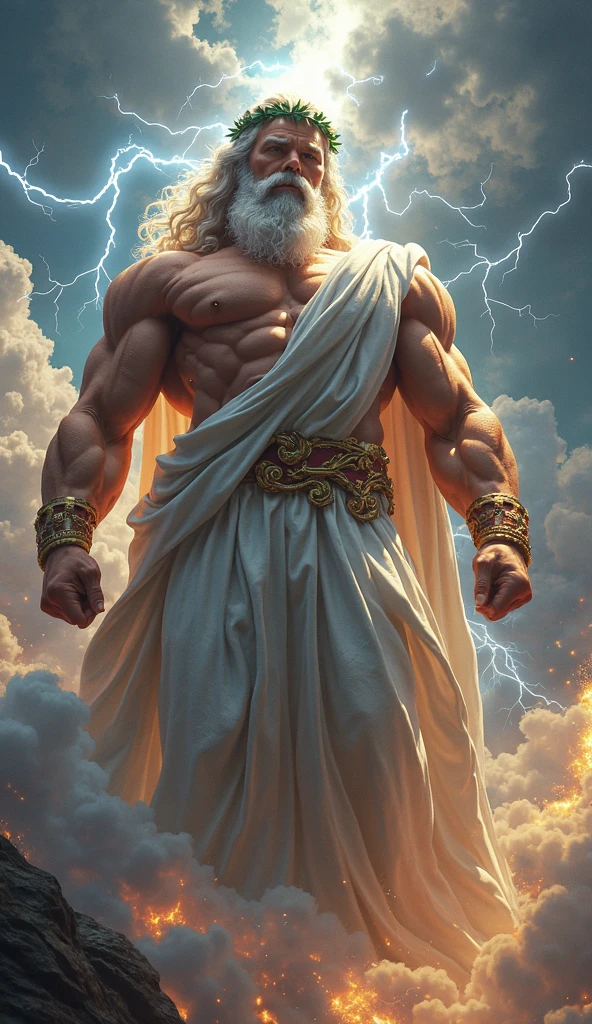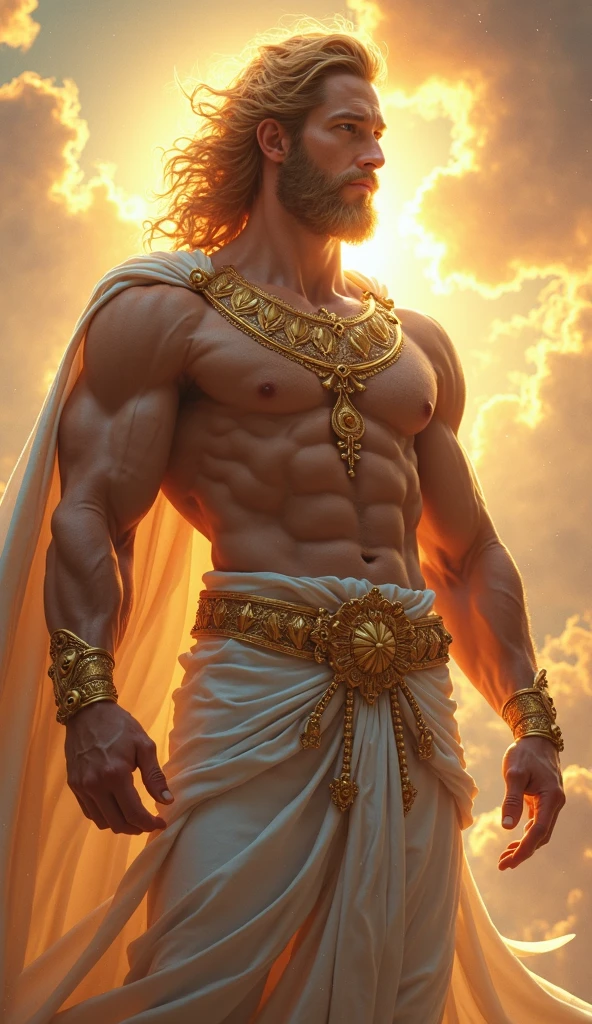Aphrodite: The Goddess Who Made the World Fall in Love
By Eduardo Gryn, Historian & Mythology Scholar
Divine Genesis: Aphrodite’s Controversial Origins
The birth of Aphrodite, the Greek goddess of love, is as tumultuous as the passions she commands. Two competing myths define her origin:
1. The Hesiodic Birth from Sea Foam
In Hesiod’s Theogony, Aphrodite arose from the sea foam (aphros) created when Cronus castrated Uranus and tossed his genitals into the ocean. She emerged near Cyprus, fully grown and radiant, symbolizing love born from primal violence. This version positions her as older than Zeus, connecting her to pre-Olympian cosmic forces.
2. Homer’s Daughter of Zeus
Homer’s Iliad claims she was the daughter of Zeus and the Titaness Dione, anchoring her within the Olympian hierarchy. Scholars argue this later version softened her primal edges to align with patriarchal norms.
Sacred Geography: Temples & Cult Sites
Aphrodite’s worship spanned the Mediterranean, blending lust, war, and civic pride:
1. Cyprus: Island of the Goddess
Paphos, Cyprus, housed her most famous temple, where pilgrims performed rituals for fertility and protection. The Petra tou Romiou sea stack is still hailed as her mythical birthplace.
2. Cythera: Gateway to Greece
The island of Cythera, her first landing point after birth, hosted annual festivals mixing sacred prostitution and poetic competitions. Votive offerings of seashells and mirrors remain buried there.
3. Knidos & Aphrodisias
The Statue of Aphrodite of Knidos by Praxiteles (4th century BCE)—the first life-sized female nude in Greek art—drew pilgrims to western Turkey. The city of Aphrodisias later became a Roman hub for her worship, complete with gladiator games in her honor.
Timeless Beauty: Aphrodite’s Iconic Appearance
Ancient texts and art agree on her irresistible allure, though details vary:
1. Classical Descriptions
Homer’s Iliad paints her as golden-haired, rosy-cheeked, and perpetually youthful. She often wore a magic girdle (kestos himas) that made anyone desire her. Sculptors like Praxiteles emphasized her soft curves and contemplative gaze, balancing sensuality with divinity.
2. Symbolic Companions
She was rarely alone:
- Eros/Cupid: Winged god of desire, often hovering with arrows.
- Graces (Charites): Trio of goddesses representing charm, beauty, and creativity.
- Doves & Sparrows: Birds sacred to her, symbols of love’s fragility.
Modern Echoes: Where Aphrodite Lives Today
Aphrodite’s influence transcends ancient temples:
1. Art & Pop Culture
From Botticelli’s The Birth of Venus (1486) to Beyoncé’s Renaissance visuals, her imagery fuels beauty standards. She appears in films like Troy (2004) and games like Assassin’s Creed Odyssey, often as a scheming enchantress.
2. Psychology & Linguistics
The term aphrodisiac derives from her name, and Freudian theories link her to the “life drive” (Eros vs. Thanatos). Modern romance tropes—love at first sight, tragic passion—mirror her myths.
3. Neo-Pagan Worship
Contemporary Hellenic polytheists celebrate Aphrodisia in July/August, offering roses, honey, and poetry at makeshift altars. Cyprus’ annual Kataklysmos festival blends her lore with Christian Flood narratives.
Legacy: How Aphrodite Rewired Civilization
The goddess reshaped ancient and modern worlds:
1. Love as a Cultural Force
She transformed love from a biological act to an artistic muse. The sonnet, romance novel, and rom-com genre all owe debts to her myths.
2. Gender & Power Dynamics
Aphrodite’s priesthoods often empowered women. In Corinth, her temple’s hierodules (sacred sex workers) held economic influence, challenging classical gender roles.
3. Conflict & Diplomacy
Her role in sparking the Trojan War (Judgment of Paris) became a cautionary tale about desire’s destructive power—a theme echoed in political scandals to this day.
Trivia: Aphrodite’s Lesser-Known Feats
- She owned a magic mirror that showed the viewer’s truest desire, later owned by Medea.
- The Aphrodite Fritillary butterfly is named for her, its wings mimicking her iridescence.
- She cursed women of Lemnos with body odor for neglecting her altars, leading their husbands to flee.
Aphrodite: The Goddess Who Made the World Fall in Love
Divine Genesis: Aphrodite’s Controversial Origins
The birth of Aphrodite, the Greek goddess of love, is as tumultuous as the passions she commands. Two competing myths define her origin:
1. The Hesiodic Birth from Sea Foam
In Hesiod’s Theogony, Aphrodite arose from the sea foam (aphros) created when Cronus castrated Uranus and tossed his genitals into the ocean. She emerged near Cyprus, fully grown and radiant, symbolizing love born from primal violence. This version positions her as older than Zeus, connecting her to pre-Olympian cosmic forces.
2. Homer’s Daughter of Zeus
Homer’s Iliad claims she was the daughter of Zeus and the Titaness Dione, anchoring her within the Olympian hierarchy. Scholars argue this later version softened her primal edges to align with patriarchal norms.
Sacred Geography: Temples & Cult Sites
Aphrodite’s worship spanned the Mediterranean, blending lust, war, and civic pride:
1. Cyprus: Island of the Goddess
Paphos, Cyprus, housed her most famous temple, where pilgrims performed rituals for fertility and protection. The Petra tou Romiou sea stack is still hailed as her mythical birthplace.
2. Cythera: Gateway to Greece
The island of Cythera, her first landing point after birth, hosted annual festivals mixing sacred prostitution and poetic competitions. Votive offerings of seashells and mirrors remain buried there.
3. Knidos & Aphrodisias
The Statue of Aphrodite of Knidos by Praxiteles (4th century BCE)—the first life-sized female nude in Greek art—drew pilgrims to western Turkey. The city of Aphrodisias later became a Roman hub for her worship, complete with gladiator games in her honor.
Timeless Beauty: Aphrodite’s Iconic Appearance
Ancient texts and art agree on her irresistible allure, though details vary:
1. Classical Descriptions
Homer’s Iliad paints her as golden-haired, rosy-cheeked, and perpetually youthful. She often wore a magic girdle (kestos himas) that made anyone desire her. Sculptors like Praxiteles emphasized her soft curves and contemplative gaze, balancing sensuality with divinity.
2. Symbolic Companions
She was rarely alone:
- Eros/Cupid: Winged god of desire, often hovering with arrows.
- Graces (Charites): Trio of goddesses representing charm, beauty, and creativity.
- Doves & Sparrows: Birds sacred to her, symbols of love’s fragility.
Modern Echoes: Where Aphrodite Lives Today
Aphrodite’s influence transcends ancient temples:
1. Art & Pop Culture
From Botticelli’s The Birth of Venus (1486) to Beyoncé’s Renaissance visuals, her imagery fuels beauty standards. She appears in films like Troy (2004) and games like Assassin’s Creed Odyssey, often as a scheming enchantress.
2. Psychology & Linguistics
The term aphrodisiac derives from her name, and Freudian theories link her to the “life drive” (Eros vs. Thanatos). Modern romance tropes—love at first sight, tragic passion—mirror her myths.
3. Neo-Pagan Worship
Contemporary Hellenic polytheists celebrate Aphrodisia in July/August, offering roses, honey, and poetry at makeshift altars. Cyprus’ annual Kataklysmos festival blends her lore with Christian Flood narratives.
Legacy: How Aphrodite Rewired Civilization
The goddess reshaped ancient and modern worlds:
1. Love as a Cultural Force
She transformed love from a biological act to an artistic muse. The sonnet, romance novel, and rom-com genre all owe debts to her myths.
2. Gender & Power Dynamics
Aphrodite’s priesthoods often empowered women. In Corinth, her temple’s hierodules (sacred sex workers) held economic influence, challenging classical gender roles.
3. Conflict & Diplomacy
Her role in sparking the Trojan War (Judgment of Paris) became a cautionary tale about desire’s destructive power—a theme echoed in political scandals to this day.
Trivia: Aphrodite’s Lesser-Known Feats
- She owned a magic mirror that showed the viewer’s truest desire, later owned by Medea.
- The Aphrodite Fritillary butterfly is named for her, its wings mimicking her iridescence.
- She cursed women of Lemnos with body odor for neglecting her altars, leading their husbands to flee.
Aphrodite: The OG Love Guru Who Broke the Internet
Powers: How Aphrodite Hacked Hearts (and History)
Aphrodite wasn’t just pretty—she was the ancient world’s ultimate influencer. Her divine resume included skills that’d make even TikTokers jealous:
1. The Desire Dial-Up
She could crank up anyone’s lust meter with a glance. Homer called it “philtron”—a love potion on steroids. Case in point: She made Zeus hook up with mortals just to humble him. Imagine if Tinder had *that* feature.
2. Shape-Shifting Side Hustle
To seduce Anchises (a mortal shepherd), she disguised herself as a teenage princess. When he got suspicious? She dropped the act and hit him with godly glam. Dude never stood a chance.
3. Chaos Mode: Love as a Weapon
Her magic girdle wasn’t just bling. When Hera borrowed it to distract Zeus during the Trojan War, it nearly changed history. Aphrodite basically invented psychological warfare—with better accessories.
Feats: When Aphrodite Went Full Drama Queen
From starting wars to ghosting mortals, her track record was messy—but iconic.
1. The Trojan War (OG Reality TV)
Aphrodite promised Paris Helen of Troy (the “face that launched 1,000 ships”) if he gave her a golden apple labeled “fairest.” Helen’s husband Menelaus didn’t take the breakup well. Cue a 10-year war. Lesson: Never trust a beauty contest judge.
2. Adonis: The First Himbo Tragedy
Aphrodite and Persephone both fell for Adonis, a mortal hottie. They compromised by splitting custody—6 months each. But when Adonis ignored Aphrodite’s “stay indoors during hunting season” rule, a boar gored him. His blood became anemones, and Aphrodite invented the “I told you so” meme.
3. The Ultimate Flex: Turning a Statue Into a Girlfriend
Sculptor Pygmalion was done with mortal women, so he carved his dream girl, Galatea. Aphrodite, loving the simp energy, brought her to life. It’s the ancient version of AI-generated waifus—but with better dialogue options.
Modern-Day Aphrodite: Swipe Right for the Goddess
Aphrodite’s still out here pulling strings. You just gotta know where to look:
1. Dating Apps: Love as a Algorithm
Her magic girdle? That’s basically Bumble’s SuperSwipe. The “Aphrodite Project” (a real 2022 AI) matches users based on pheromone data. Hades could never.
2. Beauty Standards: From Marble to Botox
Her “perfect face” (9.5/10 chin-to-nose ratio) inspired the Golden Ratio. Today’s filters and fillers? Just mortals trying to hack her divine glow-up.
3. Pop Culture: From Disney to Divorce Court
She’s everywhere:
- Bridgerton: Basically Aphrodite’s Netflix debut.
- Taylor Swift’s “Blank Space”: A hymn to love’s chaos.
- “Hawk Tuah” girl: Mortals still chase that Aphrodite virality.
Legacy: Why We Can’t Quit Love’s Original Hypewoman
Aphrodite’s impact is baked into civilization’s DNA:
1. Romance 2.0
She invented the meet-cute (see: Anchises), love triangles (Helen/Paris/Menelaus), and toxic exes (looking at you, Ares). Modern rom-coms? Just remixing her greatest hits.
2. The Self-Love Industrial Complex
Her cults preached “know your worth”—if you were a hierodule in Corinth, you charged top drachma. Today’s $10B self-care market? Same energy.
3. War and Peace (But Mostly War)
From Helen of Troy to celebrity breakups tanking stock markets (looking at you, Brangelina), Aphrodite proved love is the ultimate WMD.
Trivia: Aphrodite’s Greatest Hits
- Her Roman name, Venus, got a whole planet—and a razor brand.
- The word “venerate” comes from her cult’s “venus” root. Coincidence? Nope.
- She’s the patron of OnlyFans creators—though they probably don’t know it.



